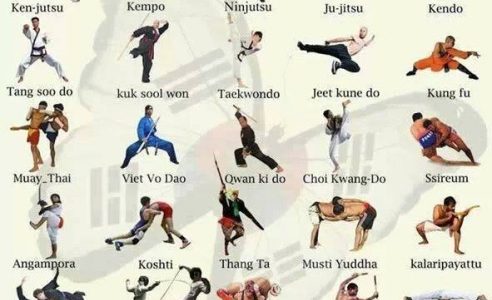The Fundamentals And Importance Of Taekwondo Types
The Fundamentals And Importance Of Taekwondo Types
Blog Article
Content Writer-Stein Bradshaw
Did you understand that there are over 20 different taekwondo kinds, each with its own unique series of activities and techniques? These forms, additionally known as poomsae, play a vital duty in the method and growth of taekwondo experts.
But what exactly are these kinds, and why are they so substantial? In this conversation, we will certainly discover the basics of taekwondo kinds, their origins, and the crucial elements that make them an indispensable part of this martial art.
Whether you're a newbie or a skilled professional, comprehending the value of taekwondo forms will certainly deepen your admiration for this ancient practice and improve your journey in the direction of mastery.
Origins and Advancement
The origins and evolution of Taekwondo can be mapped back to ancient martial arts practices in Korea. It was established over 2,000 years earlier and has actually because turned into a prominent and worldwide recognized sporting activity.
Taekwondo was greatly affected by various Oriental martial arts designs, such as Taekkyon and Subak, as well as Chinese fighting styles. It was originally used as a means of self-defense, but over time, it progressed right into a competitive sporting activity that concentrates on striking techniques and high kicks.
In the 20th century, Taekwondo underwent a significant makeover and was standard right into its modern-day kind. The Korea Taekwondo Association played a vital role in this process, helping to establish policies, techniques, and develops that are still followed today.
Crucial Element and Techniques
Now let's explore the basic elements and techniques of Taekwondo. To fully recognize the key elements and methods, it is necessary to delve much deeper right into the following subtopics:
- Positions: Taekwondo highlights the proper use of positions, such as the front stance, back position, and steed position. These stances provide stability, equilibrium, and power in implementing numerous methods.
- Strikes and Kicks: Taekwondo is renowned for its effective and vibrant kicks, consisting of the front kick, roundhouse kick, and side kick. Strikes, such as strikes and knifehand strikes, are additionally important methods in Taekwondo.
- Blocks and Defense: Reliable defense is crucial in Taekwondo. Blocks, such as the high block and reduced block, are used to safeguard versus incoming attacks. Correct timing and positioning are crucial to successfully defending oneself.
Benefits and Effect
One of the significant advantages of exercising Taekwondo is the renovation of physical conditioning and total well-being. By engaging in normal training sessions, you can enhance your cardiovascular health and wellness, toughness, versatility, and endurance. Taekwondo involves a variety of motions that target different muscle mass teams, aiding you build a strong and toned physique.
Additionally, this fighting style advertises psychological health by decreasing anxiety and anxiety degrees. The discipline and focus required in practicing Taekwondo can help boost your concentration and enhance your capability to take care of tough circumstances.
Additionally, the method of Taekwondo instills a sense of confidence, self-discipline, and self-constraint, which can positively impact different locations of your life. In god of martial arts - chapter 140.1 , practicing Taekwondo can result in a much healthier and more well balanced lifestyle.
Final thought
So there you have it! Taekwondo forms aren't just simple regimens, yet a depiction of the rich background and evolution of this martial art. By grasping the key elements and techniques, experts can enjoy many physical and psychological benefits.
From boosted flexibility and strength to boosted emphasis and technique, taekwondo forms have a long lasting influence on those who exercise them.
So, whether you're a beginner or a knowledgeable martial artist, accept the power of these types and let them take you on a trip with time.
